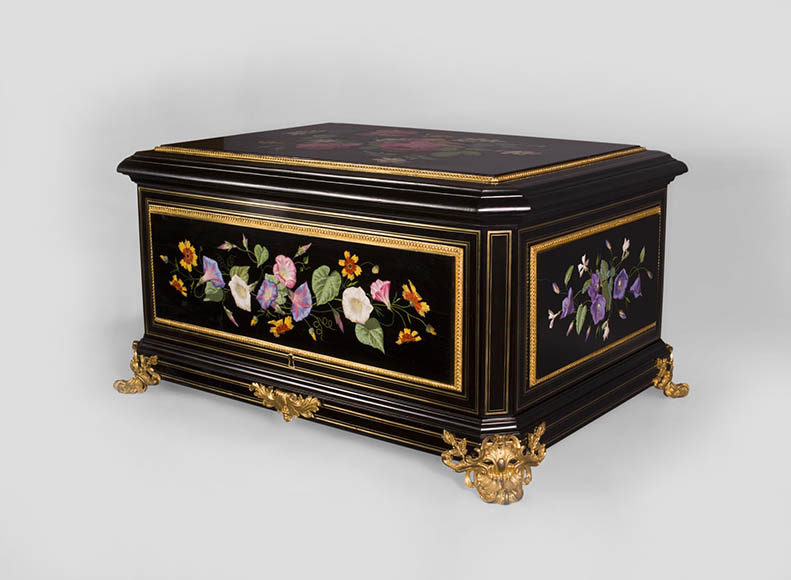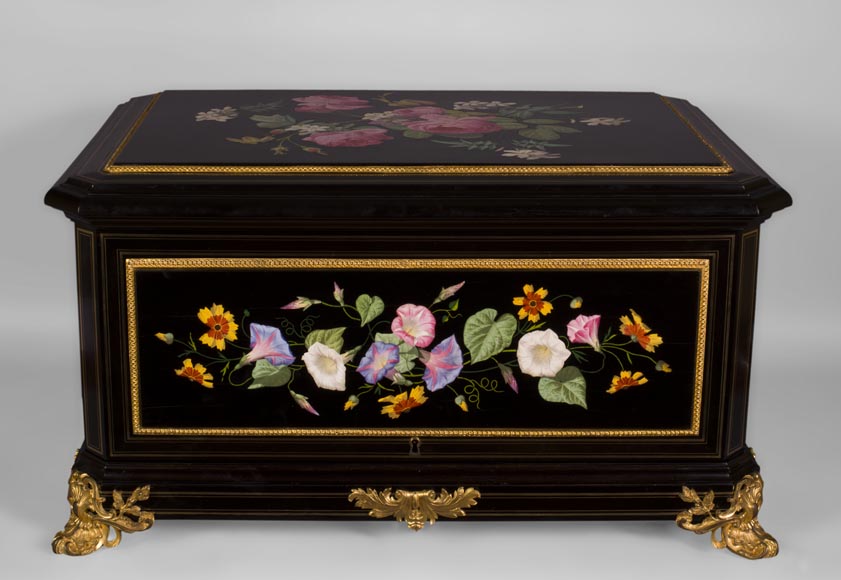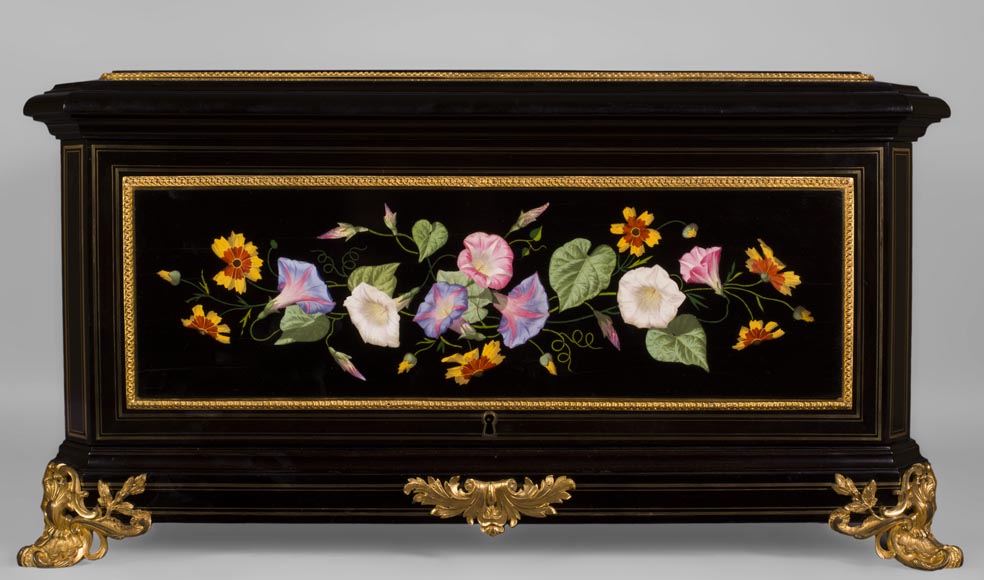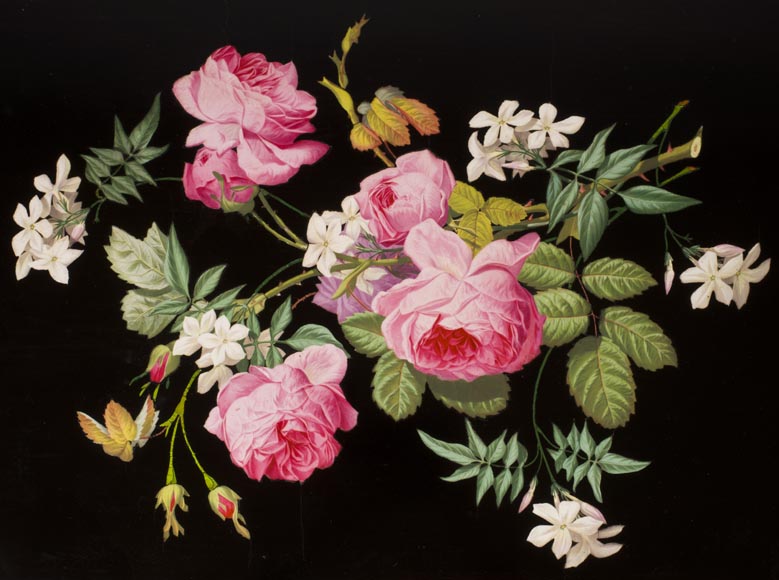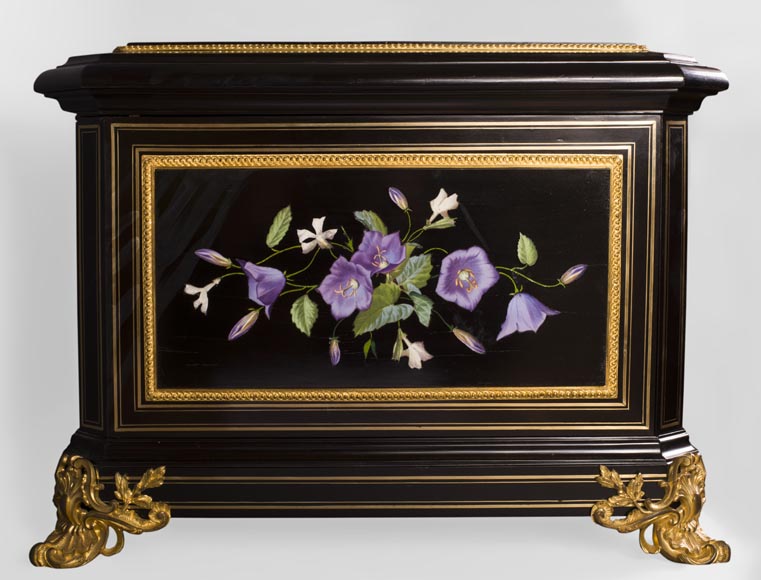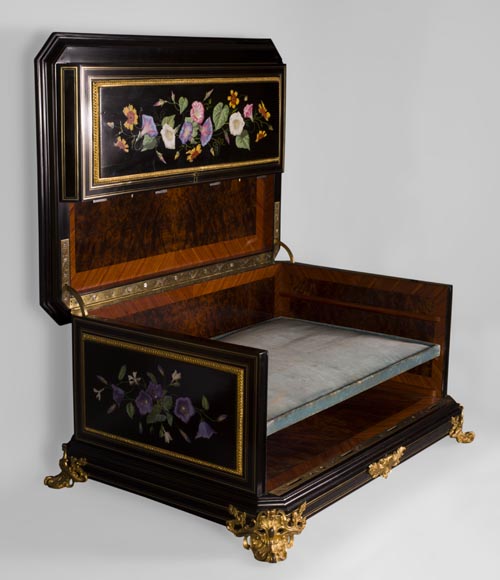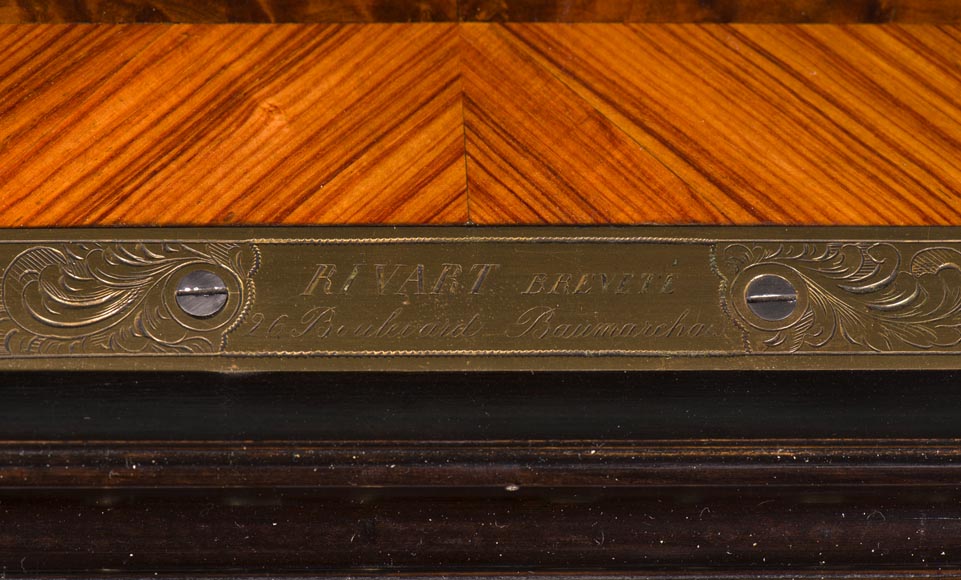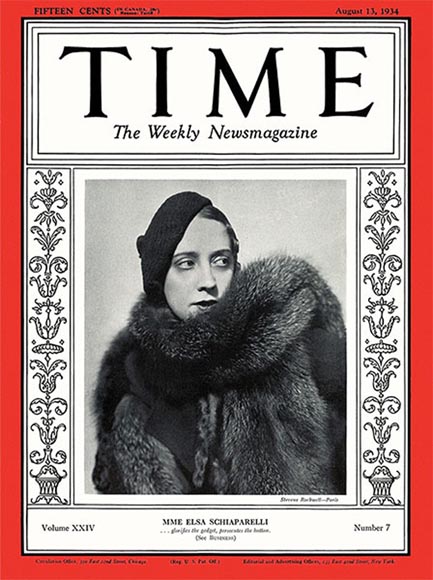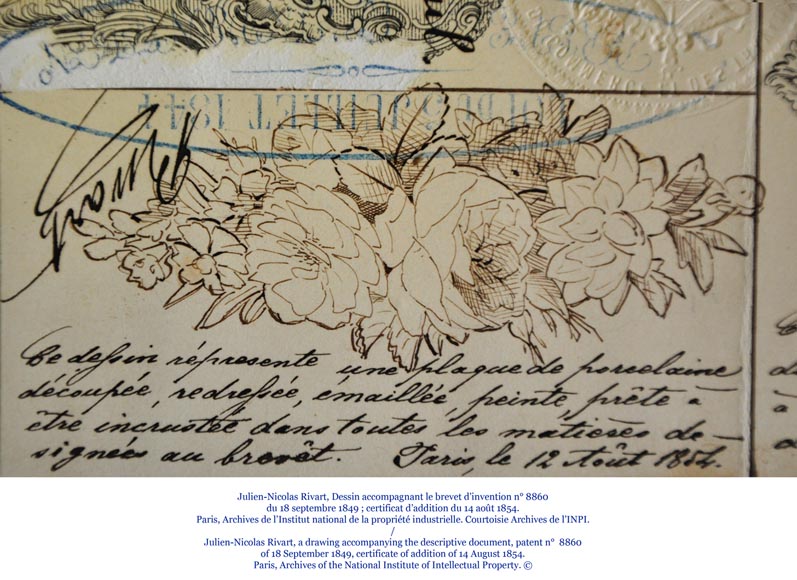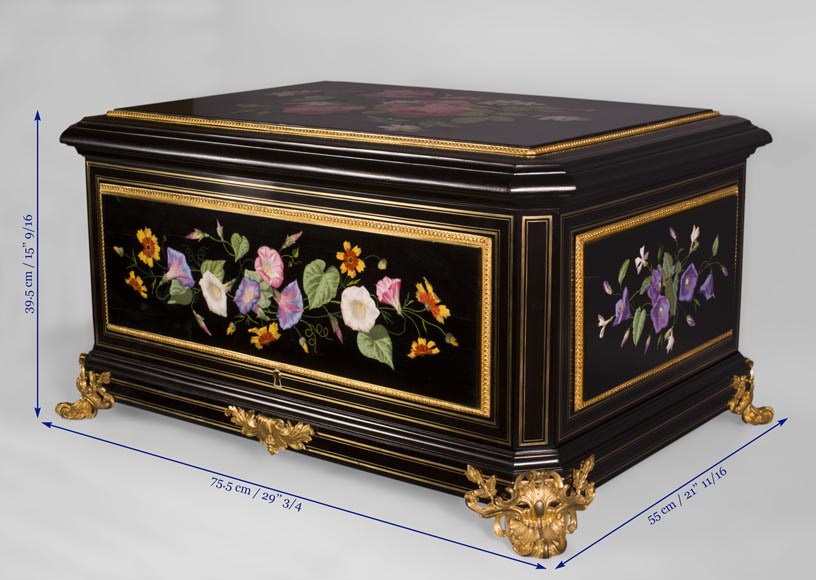Style Napoleon III / Ref.10712
Julien-Nicolas RIVART (1802-1867) - Exceptional Jewel Case decorated with porcelain marquetry from Elsa Schiaparelli’s collection
Dimensions
Width 29'' ⅞ 76cm
Height 15'' ¾ 40cm
Depth: 21'' ⅝ 55cm
Origin:
Between 1860 and 1867.
Engraved : “Rivart, breveté 26 Boulevard Baumarchais” .
Originating from Elsa Schiaparelli’s collection.
Status:
Blackened pearwood, gilt bronze, brass, porcelain marquetry. In excellent condition.
This large jewel case, which sophisticated decoration of porcelain inlay contrasts with blackened wood, bears the signature of Julien-Nicolas Rivart , inventor of the porcelain marquetry process. The latter patented his innovative technique he was the only one to master in 1849, which opened the doors of the most prestigious commissions to him, including those of the Imperial couple, Napoleon III and Eugenie. The sobriety of the case, bordered with black and gold laces, is only broken by small gilt bronze mounts depicting shells and foliage borrowed from the Louis XV style vocabulary. The interior, just as beautiful, has the warm tone of the rosewood veneer.
The delicacy and rarity of this object were recognized by the woman of taste that Elsa Schiaparelli was, since it was in the possession of this major personality of fashion and of 1930's Paris, who made it her jewelry case. Elsa Schiaparelli, born in 1890 at the Corsini Palace in Rome, was a figurehead of haute couture between 1930 and 1950. Friend of the Surrealists in the 1920's, she always promoted avant-garde and creativity, but this case is the witness of her personal sensitivity to other aesthetics and her receptivity to the poetry of things. Perhaps she had also recognized her fetish color in the roses on the lid, the "Rose Shoking".
The decoration of flowers, blue and white campanulas, yellow daisies, roses and jasmines, here is of extreme finesse. These are inlays of porcelain, and painted resin for the thinnest foliage, a technique arrived at its perfection in the last years of Rivart 's career. The address engraved on the inside, 26 Boulevard Baumarchais, is indeed that of his last workshop, from 1860 to his death in 1867. His reputation was established largely for the competition that represents his new technique of inlay with that of the Florentine hard stones mosaic. The Count de Nieuwerkerke compares indeed his technique to the pietra dura in a letter of 30 March 1857. He uses here the full force of this comparison, bringing out his luminous porcelain on a deep black background. Porcelain has the advantage of enabling a more detailed cut-out, and therefore very fine details whose colors appear beautifully. But above all, it is a painted decoration that the wood panels are receiving, allowing magnificent hues and lights effects.
The box lid is decorated with roses and jasmines, the ultimate flowers of romance, while the sides are dotted with wild flowers, bellflowers and daisies, which evoke innocence and coquetry. Contrasting colors accentuate the luminosity of these floral compositions, so the deep pink makes all the more vibrant the leaves of jasmine's aqua green, and the orange of the daisies revives the campanulas' blue. The precision of the floral decorations of Rivart had already owed him in 1852 a medal awarded by the National Society of Horticulture. Here, we can indeed admire the work of an illusionist brush that has kept the freshness and lightness of its subject. These flowers immortalized in the kaolin could not find more suitable support than porcelain for this luxurious beauty accessory.
Informations
Price: on request
Recommended for you :
Dimensions:
Width: 241
Height: 351
Depth: 120
Dimensions:
Width: 85
Height: 150
Depth: 43
Dimensions:
Width: 124
Height: 148
Depth: 47
Dimensions:
Width: 128
Height: 218
Depth: 44
Dimensions:
Width: 390
Height: 125
Depth: 65
Dimensions:
Width: 53
Height: 138
Depth: 34
Dimensions:
Width: 98
Height: 204
Depth: 43
Dimensions:
Width: 75
Height: 158
Depth: 47
Dimensions:
Width: 88
Height: 192
Depth: 46
Dimensions:
Width: 107
Height: 211
Depth: 47
Dimensions:
Width: 78
Height: 186
Depth: 47
Dimensions:
Width: 114
Height: 130
Depth: 49



